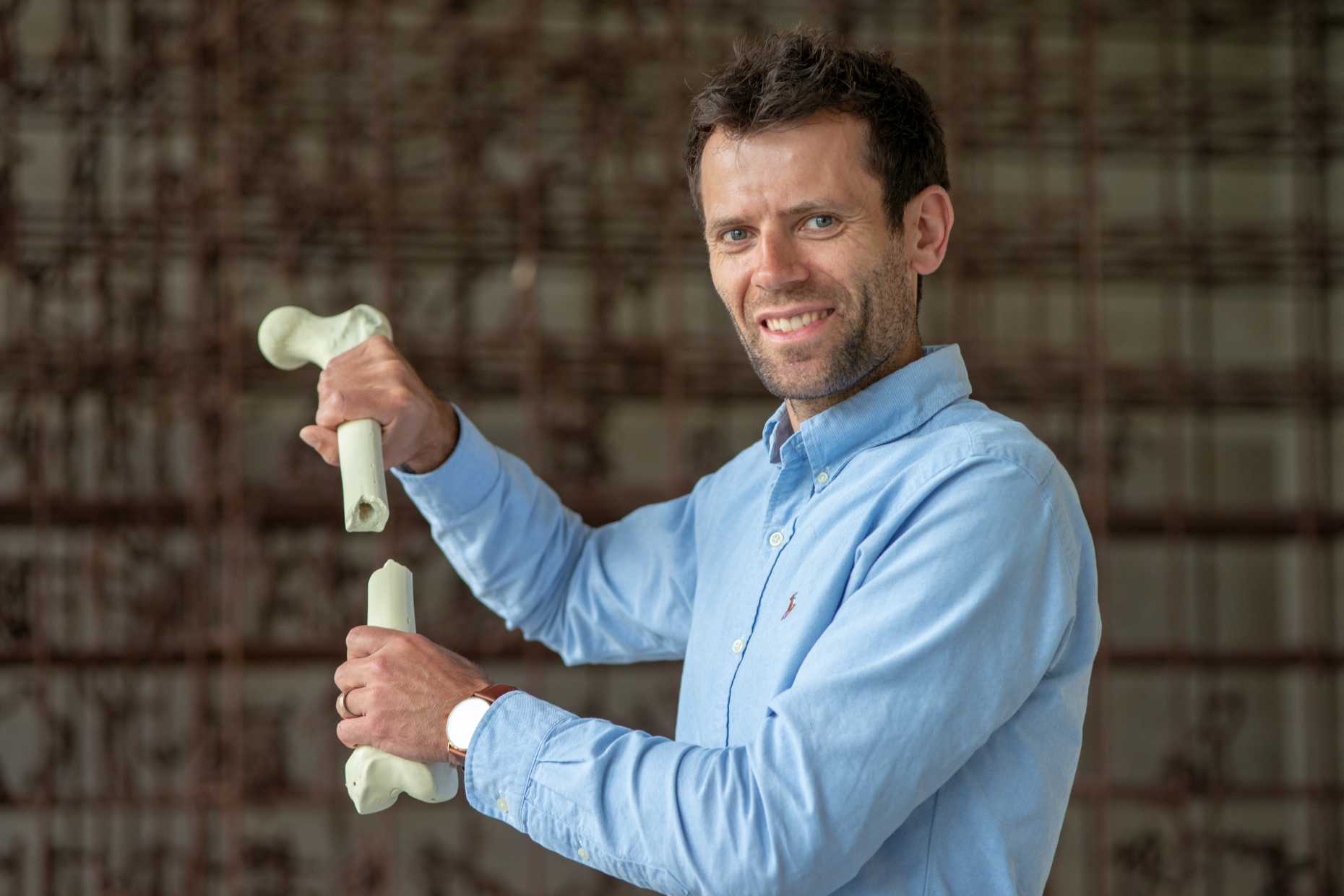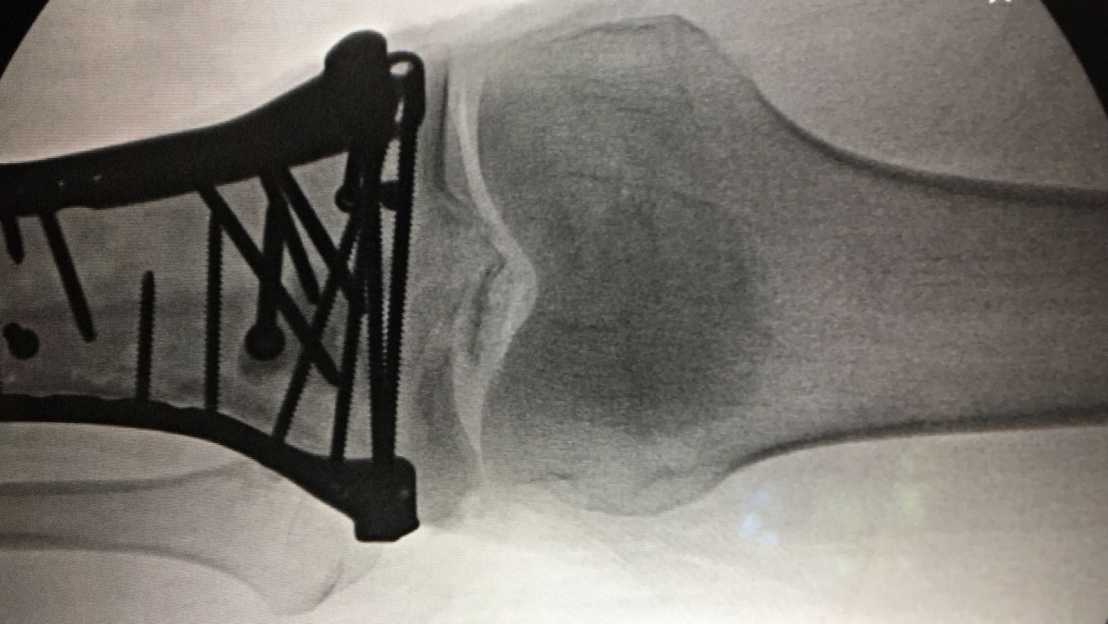From ski racer to bone specialist
He was Switzerland’s junior champion in Super-G and dreamed of becoming a professional skier. Today he no longer regrets after that shattered dream: as an ETH Pioneer Fellow, Thomas Zumbrunn develops a new method to fix bone fractures.

Thomas Zumbrunn’s childhood in Meiringen, in the Bernese Oberland, was the perfect setting for someone destined to become a ski racer: born in a mountainous region, virtually with a pair of skis on his feet. As soon as he could walk, he immediately took to the slopes under the expert guidance of his parents, both ski instructors.
“Ski school was my day-care center,” he jokes. He reached a peak in 2003 when he became Swiss junior champion in Super-G. He had just completed his high-school ‘Matura’ exam and only had one goal in mind: to become a professional skier. Therefore, he spent a year devoting himself entirely to the sport, trained every day and worked for his father taking care of the local school. Despite all his efforts, however, he did not make the Swiss B-Team. “At the time, my world fell apart,” he says.
From the ski slope to the lecture hall
Thomas Zumbrunn does not spend long dwelling on his fate. Fall down, get back up, and keep on going: although he didn’t make it as a professional, he was still able to race. He began his Bachelor’s studies in Human Movement Sciences at ETH, joined the academic ski club, carried on training and took part in the university sports competition Universiade four times.
When he received an athletic scholarship at the University of Utah, Zumbrunn spent the mornings at university and the afternoons on the slope, and eventually completed his Bachelor’s degree from ETH. He then continued with a Master’s program in biomedical engineering in Salt Lake City.
It was the perfect lifestyle for him. “This combination of study and sport was ideal for me,” he says, almost with a sense of enthusiasm.
He realised his sports career was over, after competing in the winter Universiade in Turkey in 2011. Having decided to pursue his professional career, things weren’t easy initially. Eventually, however, he found his dream job at Massachusetts General Hospital in Boston, the teaching hospital for the renowned Harvard University. “I had an incredible time working with clinicians and scientists on the innovation and development of new orthopaedic implants,” he recounts.
The bone puzzle
Even so, after six years in the USA, Zumbrunn felt he wanted to return to his homeland. So he put out feelers to ETH, and became a doctoral student under Professor Stephen Ferguson, working on a thesis on innovative knee implants. He spent the first two years researching for his dissertation in Boston – “the ideal arrangement for me,” as he puts it. To receive the ETH medal for his thesis was the highlight, rounding up his exciting “race” across the Atlantic.
It was also in Boston where he first came up with the idea for the “fracture-specific bone plate”. An orthopaedic specialist he got to know told him how long the operation took to “knit” together the bone fragments correctly in complicated fractures. “It’s like a puzzle,” Zumbrunn says. But after solving the puzzle, there is still work to do: all the bone fragments need to be screwed together.
These screws repeatedly cause problems because they don’t provide enough stability, or they may even rub against adjacent joints. The solution: customised bone plates.

“At current standard bone plates are sometimes still bent into shape during surgery, to fit the patient’s anatomy,” Zumbrunn explains. “As you can imagine, the results are not always ideal”.
Zumbrunn’s idea is to use computer tomography and 3D printing to match bone plates to the individual patient’s anatomy, providing improved stability. In addition, this allows to determine how the individual bone fragments can be screwed together most efficiently prior to surgery. Above all, the new method will reduce surgery time, so that the “fracture-specific bone plate” should ultimately help to cut long-term healthcare costs.
Zumbrunn has been working full time on this project since May 2019 and he gave up his (well-paid) job in industry to realise his dream of founding his own start-up. He wants to use his 18 months as a Pioneer Fellow to develop his idea to the point where he can persuade investors to sign up for it. Zumbrunn thinks it could be ready for market in a few years. “I am always inspired by the new,” he says. “The focus of my doctoral thesis was how joints function for optimal mobility. When it comes to a bone plate, however, the main challenge is stability and load bearing.”
Mountain and city
Zumbrunn’s own life has also been shaped by the interaction between movement and stability. He commutes between his two homes in Hasliberg and Zurich, and doesn’t find the distance a problem. “I feel at home in both places,” he says, recalling the time split between America and Switzerland. Zumbrunn’s “main home” in Hasliberg, a 300-year-old farmhouse, is also where he can enjoy the outdoor life after hours of research indoors. He has just got married, and his wedding to his wife Aleksandra – a Polish dentist – was in Sri Lanka. “That shows I have another side which is not very traditional,” he says. “And also that we both like to travel”.
He recently ran his first triathlon with his wife, as he always likes to try something new in the sports arena too. When asked whether he’d like to put down roots (again) in the Bernese Oberland with his wife in the long term, he doesn’t give a straight answer. “I like both the mountains and the city,” he says. Is he still disappointed he wasn’t able to pursue a career as a professional skier? “With hindsight, I can say that everything has turned out perfectly,” he says without hesitation. “Sport has helped me move up the career ladder.”
